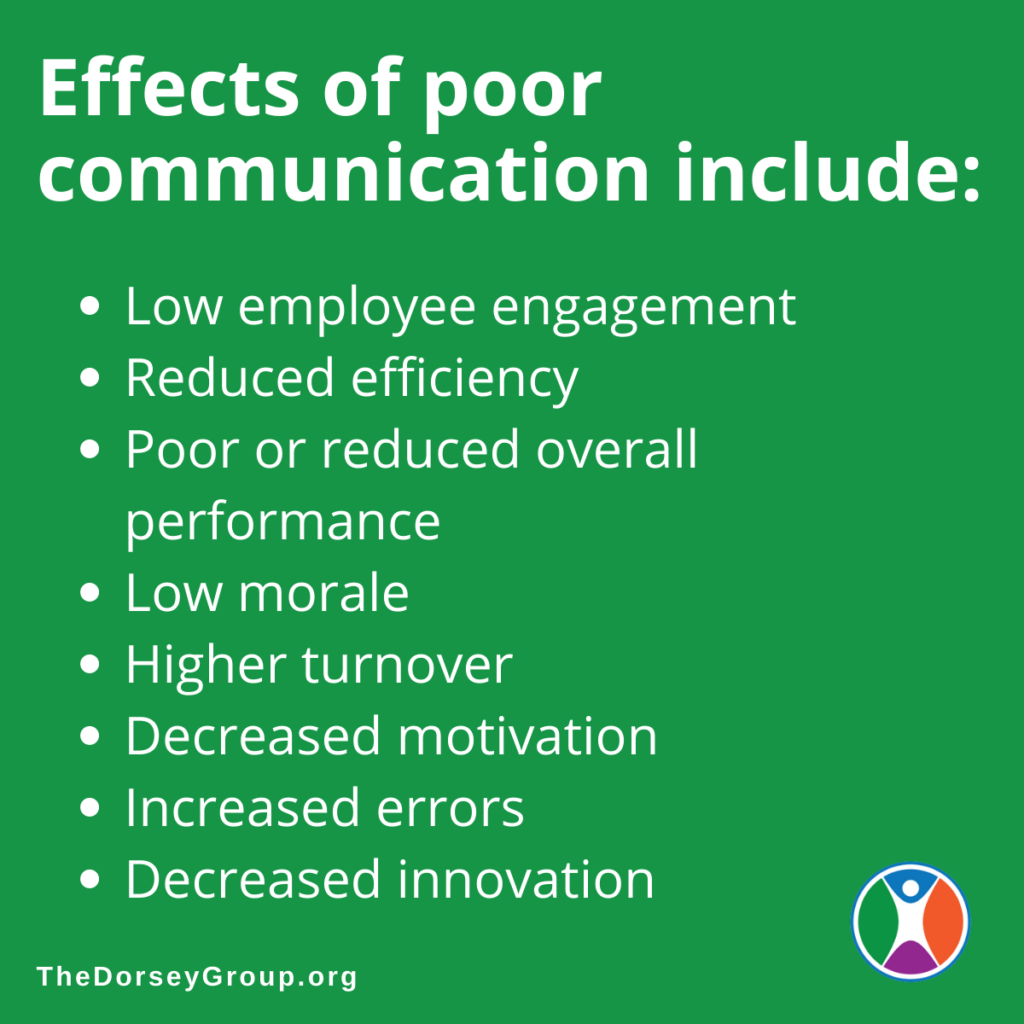There are many elements necessary for an organization to elevate itself to world-class status. Among them, is building an effective infrastructure for communication. Without a set infrastructure, many companies find that their communication begins to degrade over time. Departments stop holding meetings or meetings become ineffective. Workers begin to adopt the attitude that they know all there is to know and get out of touch with how well they are performing, position expectations and their priorities. Let’s take a look at how poor communication can affect your company and the steps to take to implement an effective infrastructure.
How poor communication affects business
We’ve all heard the expression, “the right hand doesn’t know what the left hand is doing.” When it comes to running a high performing business, this lack of communication is highly undesirable and can have dangerous effects on your business.
It’s estimated that when employees understand their roles in the business, 91 percent of them will work toward that success. That number plummets to 23 percent when they don’t. Effective internal communication is key to financial success, with studies showing that those companies with a strong internal infrastructure have a 47 percent-higher total return to stakeholders than those companies that don’t.
How does inadequate communication affect your bottom line?
A recent SMB Communications Study reported that the cumulative cost per worker per year due to productivity losses resulting from communication barriers is $26,041. So depending on how many workers your company has, that cost could be in the hundreds of thousands. And it’s estimated that a business with 100 employees spends an average downtime of 17 hours a week clarifying communication. That downtime translates to an annual cost of $2,604,100.
Building a robust communication infrastructure
It’s clear that any company looking to maintain a high level of efficiency and peak performance needs to build and implement a strong communication infrastructure. Communication should not be viewed as an option—rather an imperative process that leads to high performance and growth. This infrastructure needs to include everyone from the executives and employees to the vendors, stakeholders and customers. When it is done properly, the infrastructure represents everyone’s interests with the customers’ needs and desires ranking above all else.
Things to consider when creating your communication infrastructure:
- Have a clear mission
- Draft a statement of purpose
- Establish the what, how and who of your communication model
- Outline communication goals, audiences, key messages, communication channels and how you’re going to measure the effectiveness of communications
- Establish a schedule and make it consistent
- Get everyone onboard—train new employees as they are hired
With today’s most advanced technology, it would seem nearly impossible to have communication issues, yet organizations all over the world suffer from the consequences of not communicating effectively. Good communication can only be achieved if there is a system in place that’s not only clearly defined, but that is required. Companies that make communication a priority and implement a structured system, including where communication starts and how it flows through the organization, are the ones that will continue to perform at a much higher level than those which don’t.
The Dorsey Group can help unleash your team’s potential and power peak performance. For more information, contact us at www.TheDorseyGroup.org or (954) 629-5774.


